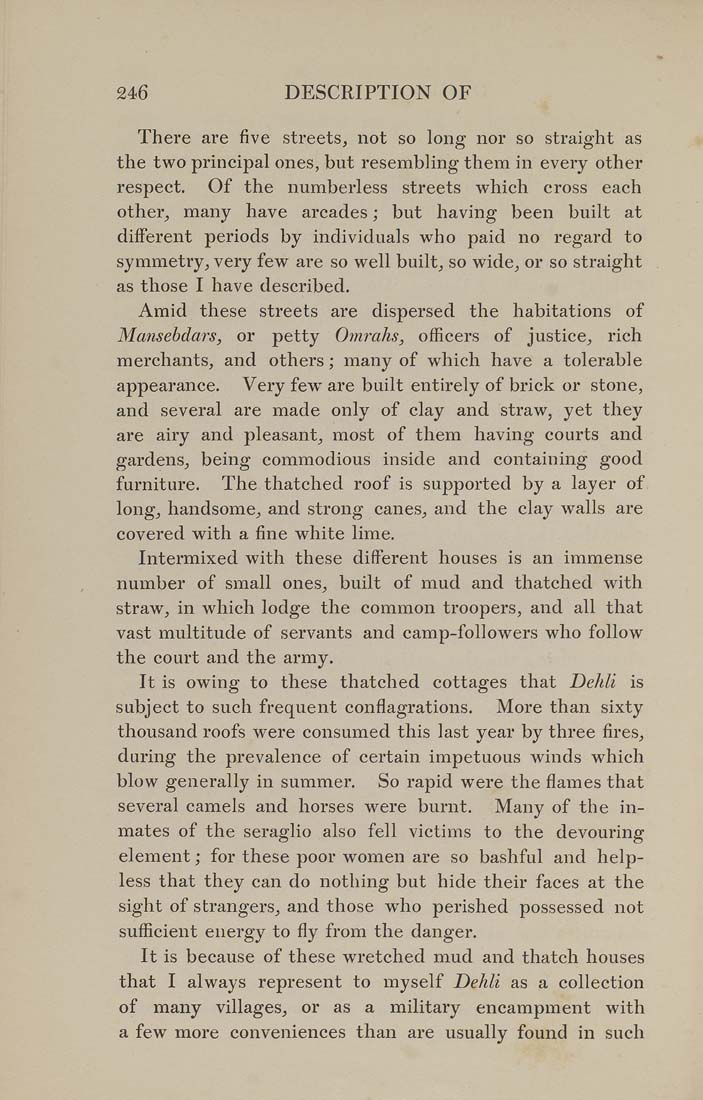246 DESCRIPTION OF
There are five streets, not so long nor so straight as
the two principal ones, but resembling them in every other
respect. Of the numberless streets which cross each
other, many have arcades; but having been built at
different periods by individuals who paid no regard to
symmetry, very few are so well built, so wide, or so straight
as those I have described.
Amid these streets are dispersed the habitations of
Mansebdars, or petty Omrahs, officers of justice, rich
merchants, and others; many of which have a tolerable
appearance. Very few are built entirely of brick or stone,
and several are made only of clay and straw, yet they
are airy and pleasant, most of them having courts and
gardens, being commodious inside and containing good
furniture. The thatched roof is supported by a layer of
long, handsome, and strong canes, and the clay walls are
covered with a fine white lime.
Intermixed with these different houses is an immense
number of small ones, built of mud and thatched with
straw, in which lodge the common troopers, and all that
vast multitude of servants and camp-followers who follow
the court and the army.
It is owing to these thatched cottages that Dehli is
subject to such frequent conflagrations. More than sixty
thousand roofs were consumed this last year by three fires,
during the prevalence of certain impetuous winds which
blow generally in summer. So rapid were the flames that
several camels and horses were burnt. Many of the in¬
mates of the seraglio also fell victims to the devouring
element; for these poor women are so bashful and help¬
less that they can do nothing but hide their faces at the
sight of strangers, and those who perished possessed not
sufficient energy to fly from the danger.
It is because of these wretched mud and thatch houses
that I always represent to myself Dehli as a collection
of many villages, or as a military encampment with
a few more conveniences than are usually found in such
|








